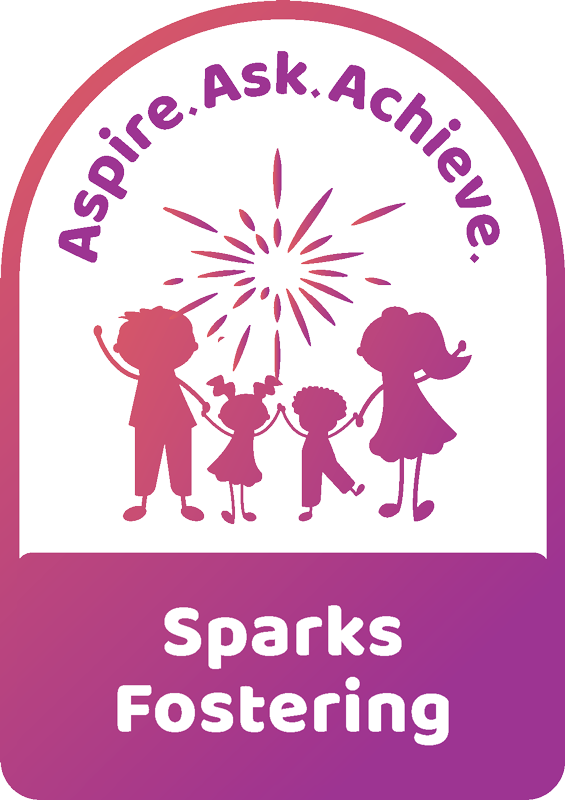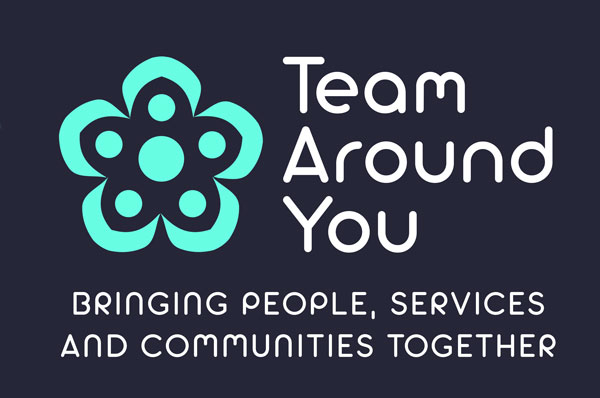Contact for children who are fostered
Sparks Fostering philosophy
‘Contact’ in foster care refers to direct or indirect contact between children in our care and their birth family, friends, or other significant others (including previous foster carers). If contact is with family, it should be referred to as ‘family time’.
Contact can help the children to build healthy attachments, trust with new carers and a healthy sense of identity and belonging.
Contact also respects the right of birth parents (or others with parental responsibility) to have contact with the child, and to receive regular updates about the welfare and progress of the child. In fact, in some circumstances contact can be used as a stepping-stone for the child to return to live with their birth family permanently (if it is safe for the child to do so).
Contact can be highly beneficial for the children, their parents and for the fostering placement; however, for some children contact can be distressing, unsettling and maybe even unsafe; therefore, contact arrangements are carefully considered by the children’s social worker and the team around the child.

Supporting foster carers to facilitate contact
Sparks Fostering supports foster carers to facilitate contact. The agency does this by helping the foster carer to understand the importance of contact; by ensuring that foster carers are appropriately matched to children whose contact can be reasonably facilitated; the agency provides financial or practical support when contact is beyond 20 miles; and the agency provides emotional and practical support to foster carers if there are difficulties related to contact.
Matching decisions
Sparks Fostering placement officers notify potential foster carers of the contact needs of children before a match is made. Sparks foster carers are expected to facilitate contact within a 20 mile radius and be open to facilitated or supported contact further away if this is required.
Sparks Fostering does not recommend foster carers to be matched with a child if the foster carers would not be able to facilitate the proposed contact arrangements; however, in exceptional circumstances, the responsible authority or Sparks Fostering may be able to offer assistance with long distance or complicated contact arrangements (this should be agreed before placement is confirmed).
During the fostering assessment, the assessing social worker will ensure that all prospective foster carers understand, respect and support the potential benefits to children of being able to stay in touch with people who are significant to them.
There may be potential challenges linked to contact, which should be discussed with the team around the child; the foster carers are expected to support the decision made by the team. Foster carers who are obstructive or refuse to facilitate contact without strong justification may be subject to panel review and possible deregistration as foster carers.
Information to be shared with the child’s birth family
The child’s social worker will determine what information is shared with the birth family (and any other significant relationships). The child’s birth family will receive updates which do not identify the fostering family (unless it has been agreed with the fostering family that it is appropriate to share any information about them).
Some information, such as whether the fostering home is a cultural, religious and linguistic match, will be shared.
Some children’s families (or significant others) may be informed of the town that the child is living in; the amount of information provided depends on whether there are any risks to the child or the fostering family.
Foster carers are expected to protect their own information by not sharing their details with the child’s family and by making all social media profiles private (or not sharing any personal information on social media). Foster carers and social workers may also speak with children about what information they shouldn’t share with people outside the fostering home.
Placement and care planning
Details of contact arrangements are provided as soon as possible after the child is placed into the fostering home (or beforehand if possible). The arrangements are formally agreed at the placement planning meeting (a meeting between the child’s social worker and the foster carer, held within 5 working days of the placement being made).
The plan for contact should consider the following:
- Who will be present during contact;
- Current relationship between the child and people attending contact;
- Who isn’t allowed to have contact;
- Who will supervise the contact;
- Who will record details of contact;
- Potential risks;
- Identified venue or method of contact;
- Facilitating long distance and overseas contact;
- Transport arrangements (including car seats);
- Agreed dates, times and length of contact;
- Handover procedure;
- Conversations with the child about the arrangement and getting feedback from the child where possible;
- Plans for delayed, missed or cancelled contact;
- Actions to be taken if there are concerns during contact;
- If there are any risks that the child may go missing during contact;
- Actions to take when there’s unplanned, unscheduled or unauthorised contact;
- Diversity issues;
- The plan for reviewing contact arrangements; and
- Relevant contacts information and who they can be shared with.
Foster carers are supported to understand what decisions about contact are delegated to them, in line with the child’s care plan, and they make those decisions in the child’s best interests. Foster carers are encouraged to ask questions and give feedback about any aspects of the child’s contact plan that may be unclear to them.
Types of contact
The children’s plan may stipulate that the method of contact is:
- By letter: Foster carers may need to support the child in their care to write to significant others. It is likely that letters would be passed via a third party, such as the children’s social worker. The third party would make sure that the content of the communication is appropriate, and having a third party also means that the addresses of the foster carer and the child’s birth family would not need to be exchanged. Alternatively, emails may be shared in a similar manner.
- By phone: The foster carer is expected to make their phone available for the child to have telephone contact at the times and frequencies outlined in the child’s plan. If it’s not suitable for the foster carer to share their number, the foster carer may be expected to purchase a basic mobile phone for the child.
- Video calls: Foster carers should ensure that video calls do not show information in the background which may disclose where the foster carer lives.
- Contact centre: Foster carers would be asked to drop off the child to a ‘contact centre’, where trained supervisors monitor contact between the child and their family.
- Foster carer supervised contact outside the home: If there are limited concerns regarding the contact between the child and their family (or others) and if there is no identified risk for the foster carer(s), the foster carer(s) may be asked to supervise contact between the child and their family outside the foster carer’s home.
- Contact in the foster carer’s home: If there are no risk issues, the child’s family may be invited to have contact within the fostering family’s home. This would only be done if it was in the best interest of the child and if there were no identified risks.
- Unsupervised contact: Unsupervised contact is often a stepping-stone to the child returning to live with their birth family. Alternatively, it may be arranged when there are no risk issues, but it is not an option for the child to return to live with the birth family at that time (for issues not related to risk).
The frequency of contact will depend on how old the child is: Children under the age of 5 may have contact several times a week, whereas older children may only have contact every few weeks.
Frequency of contact is also linked to the risk presented by the birth family and the plan for the child to return to live with their family – if there is little to no risk presented by the family and the plan is for the child to return to the family soon, the frequency and length of contact will be increased.
The cost of contact within a 20 mile radius, telephone/video contact and other reasonable expenses are included within the fostering allowance.
Monitoring the child’s reaction to contact
When arranging contact, the children’s social worker will clarify if the contact is to be supervised and by whom. If the foster carer is supervising contact, the foster carer is expected to pay close attention to the communication, body language and emotions between the child and their family. This information should then be relayed in reasonable detail in the foster carer recordings.
Foster carers should also be mindful of the child’s mood and behaviour in the days and moments before and after contact. Contact can be distressing to children and young people because they may reflect on the reasons they became looked after, they may want to return home, or the birth family may fail to turn up for contact.
Any beneficial impact of fostering should also be recorded, for example, if the birth parent demonstrated good affection and parenting skills, and if the child seemed happier after contact.
The foster carer should contact the children’s social worker and their fostering social worker immediately if there are any significant concerns about contact arrangements.
Child's wishes and feelings
Children’s wishes and feelings should be sought in all aspects of their care, including contact. This can be obtained by observing the child, by noting the child’s engagement in education and other activities, by being mindful of the child’s emotional, mental and physical health, and (if the child has capacity) to speak with the child openly.
Where possible, children’s views and wishes should be respected and arrangements made accordingly; however, the child’s safety cannot be compromised and arrangements have to be practical – this should be explained to the child sensitively.

Restricting contact
Emergency restrictions on contact are only made to protect the child from significant risk to their safety or welfare and are communicated to the supervising social worker immediately (via call, or text message), and are communicated to the child’s social worker within 24 hours of being imposed.
Ongoing restriction on communication by the child is agreed by the child’s social worker, takes the child’s wishes and feelings into account and the plan is regularly reviewed.
Contact with foster carers after end of placement
Children may live with Sparks Fostering carers for a few days, or maybe even several years. We would expect foster carers to work to build a strong healthy attachment with the children in their care, especially with children who stay for a prolonged period of time.
When a child moves on it can be an upsetting time for the foster carers and the children. Sparks Fostering would support a foster carer to remain in touch with the children if the children’s social worker consents to it; in fact, it would be considered to be commendable and potentially very useful for the children. Sparks Fostering asks foster carers to keep their supervising social worker updated about any contact with children after they have moved on from their placement with Sparks Fostering.
Foster carer recordings
Foster carers complete foster carer recordings as part of their fostering role. Details about contact should be recorded within the foster carer recordings in a timely manner with sufficient detail.
Additional resources (optional)
Helping kids and families living with alcohol-dependent parents: Independent evaluation finds scheme helped improved wellbeing, relationships and life satisfaction of children affected by parental alcohol use and conflict (from the Department of Health and Social Care)
If the child is worried about contact – Advice from Action for Children
Parents with a mental health problem: learning from case reviews. NSPCC briefing.
Podcast: working with parents – breaking down barriers to engagement. Article in community care (with video).
What are the characteristics and needs of mothers who access acute postpartum psychiatric care and have children’s social care involvement? A study conducted by researchers from King’s College London, exploring the characteristics and needs of mothers who have been admitted to acute psychiatric care in the year after childbirth and have had children’s social care involvement.







